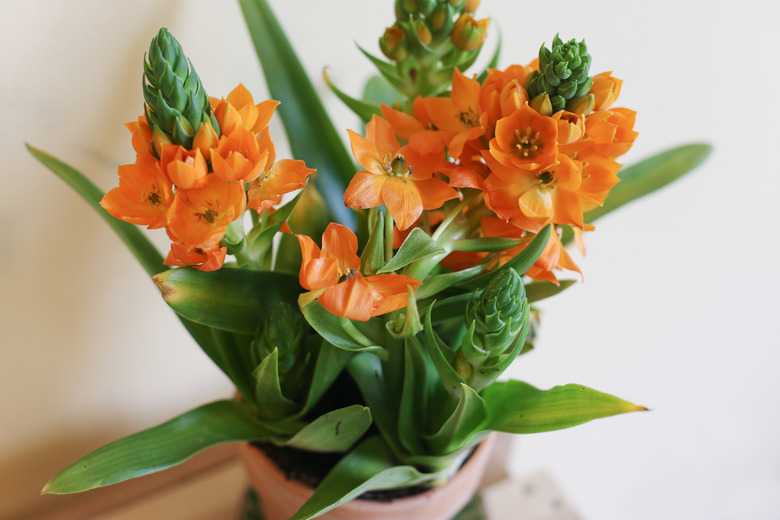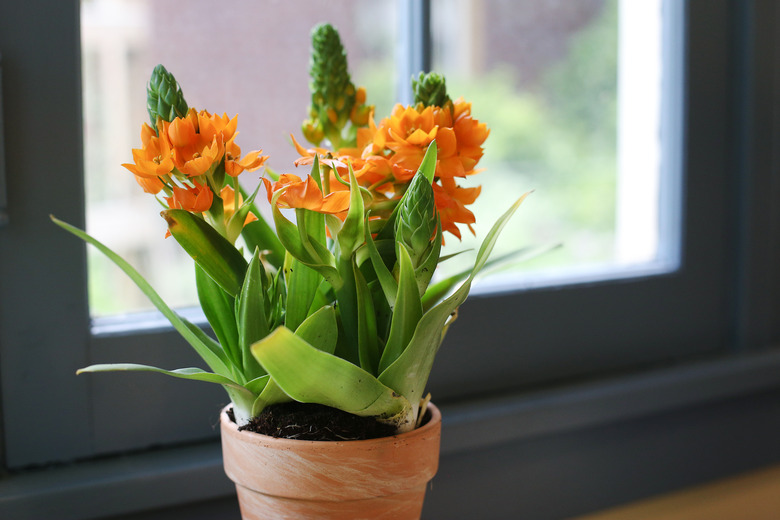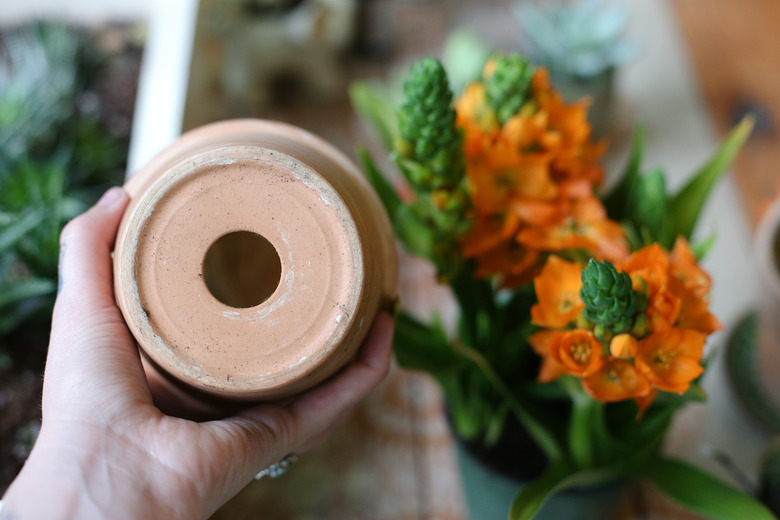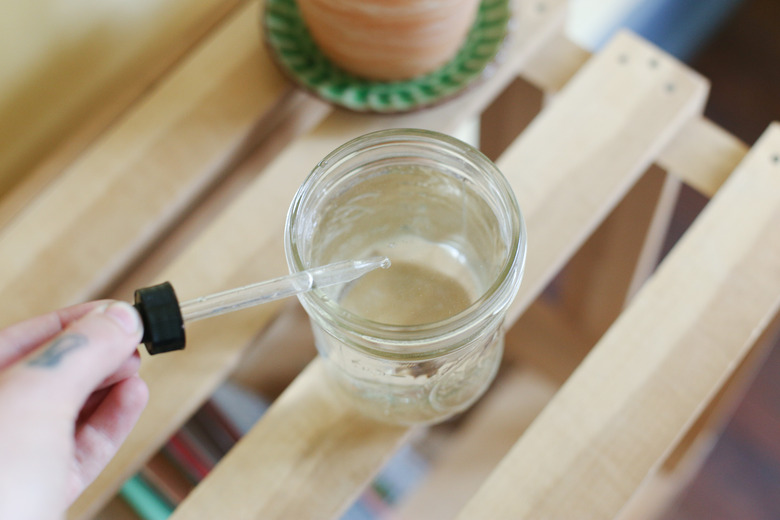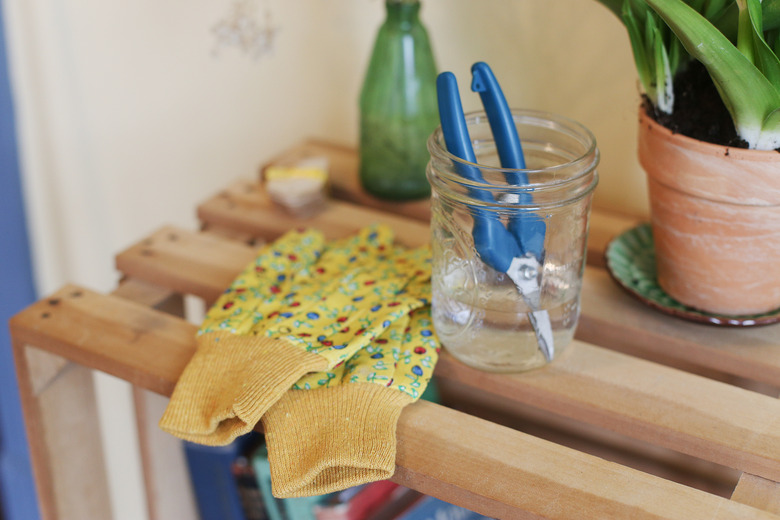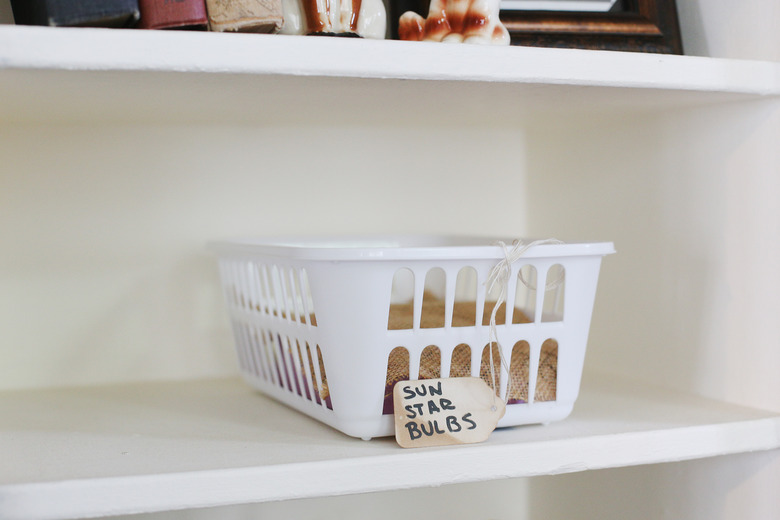How To Grow A Sun Star Plant
Also commonly called star of Bethlehem or snake flower, sun star (Ornithogalum dubium) is a bulbous perennial member of the Lily family characterized by star-shaped blooms in shades of yellow, white and orange. With a little maintenance and the right cultural conditions, the sun star plant may produce its cheerful blooms for as long as six months. This plant is toxic when ingested.
Choose a Sunny Site
Sun star is hardy in U.S. Department of Agriculture plant hardiness zones 7 to 10, preferring a sunny location with a little afternoon shade. Temperatures between 50 to 80 degrees Fahrenheit are ideal, though the plant will tolerate temperatures as low as 36 degrees F and as high as 90 degrees F. In the ground, dormant bulbs can survive lows around 10 degrees Fahrenheit. Where not hardy, sun star may be grown indoors in front of a bright, warm window. If growing multiple bulbs, provide about 12 inches of space in between plants.
Use Well-Draining Soil
Sun star plants require a well-draining soil — a mixture that is 1 part top soil, 2 parts peat moss and 1 part sand is ideal, whether grown in-ground or in a pot. If growing in a pot, use a container with a hole in the bottom for drainage.
Keep soil moist, but not waterlogged or flooded. During winter, dormant indoor plants that are alive but not actively growing foliage and flowers should not be watered.
Fertilize for Health
Once flowers have faded or dropped off the plant, fertilize with up to 2 cups of a 5-10-10 fertilizer per 50 square feet of bedding area, watering well afterwards to keep from burning the roots.
Fertilize houseplants, as well as outdoor potted plants, annually after flowering with a liquid houseplant fertilizer, such as a 10-10-10. Use up to 14 drops, mixed into 1 quart of water.
Keep fertilizer off of the leaves and store unused fertilizer in a secure location away from children and pets.
Trim Withered Foliage
Pruning spent foliage will help prevent disease. Once stems and foliage turn yellow, cut and remove them with scissors or pruning shears. Do not cut green leaves, as they are producing food for the following year.
Disinfect pruning tools before and afterwards by soaking for 5 minutes in a solution that is equal parts water and rubbing alcohol, rinsing with water afterwards and air drying. Wear gloves while pruning, as some individuals find the sap irritating to the skin.
If you plan on moving your sun star to a different location in the garden, only do so after the foliage has wilted, as they will not grow properly otherwise.
Overwinter Where Not Hardy
In regions where temperatures drop below 10 degrees Fahrenheit, sun star bulbs may be dug up and stored once leaves turn yellow in autumn. Dig up bulbs using a spading fork and wash off any remaining soil. Leave bulbs to dry for one to three days in a shaded place. Store bulbs in a cool, dry place with air circulation and a temperature between 45 to 70 degrees Fahrenheit; temperatures between 50 to 55 degrees F are ideal. Plant in the garden in spring after frosts have passed for the season.
